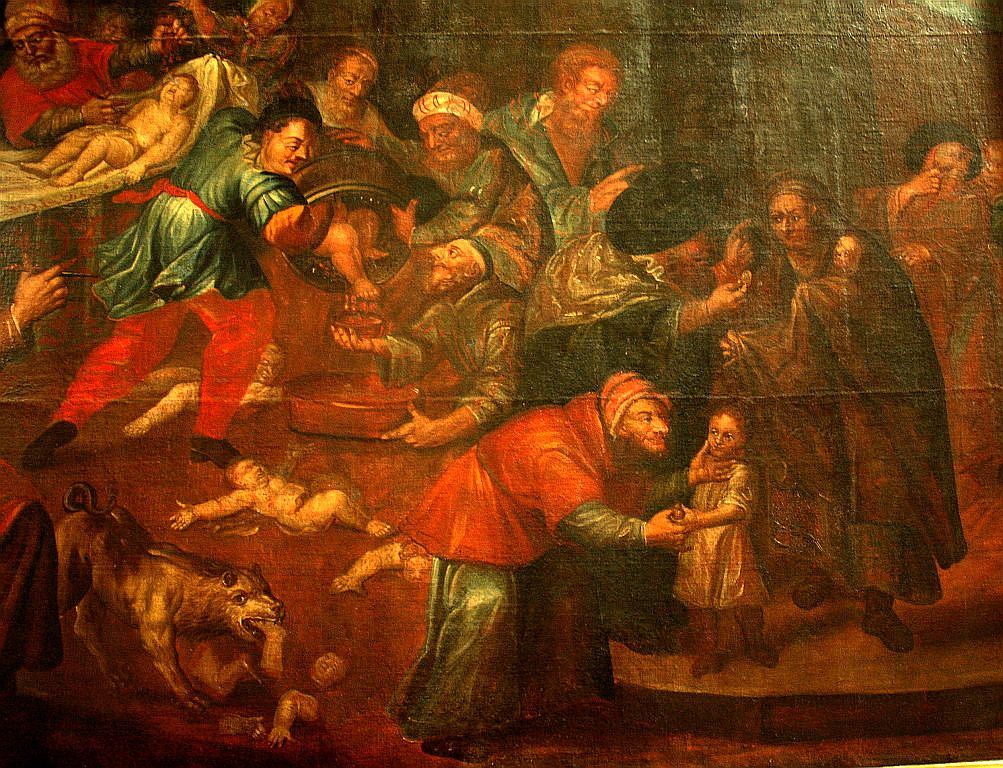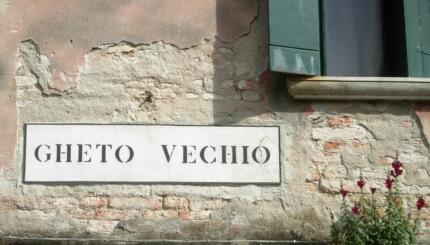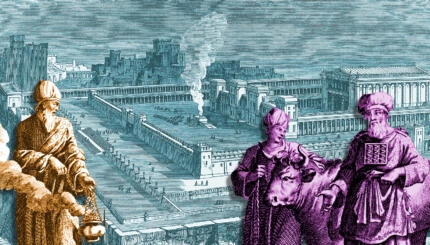When Passover night arrives, the cups of wine are filled and the prayers and songs of the holiday are joyfully chanted. In today’s times, Passover has often become synonymous with vacation, as newspapers are filled with advertisements for Passover getaways to places ranging from the Canadian Rockies to Miami Beach to the French Riviera.
But that’s not how Passover was celebrated for the Jews of medieval Europe. For them, wine — traditionally a symbol of gladness and holiday celebration — also signaled a time for contemplation on Passover. When Passover arrived, Jews celebrated with extreme caution and fear, unsure of the violence that could be unleashed against them.
Passover usually coincides with the Easter season, a time when Christians commemorate the Crucifixion. Too often, Jews, who were blamed for the Crucifixion and resented for their rejection of Christianity, became targets of hatred and superstitions. Often it was their use of wine on Passover that prompted those attacks.
On Passover, bizarre blood libel accusations were often leveled against the Jews. These accusations usually led to violent attacks against Jewish communities. There have been hundreds of blood libels throughout history, resulting in the deaths of thousands. The blood libel theme rarely deviated. A child — almost always a young boy — was lost. Allegations then arose that the Jews murdered him and used his blood for ritual purposes. Usually those leveling the accusations had murdered the child themselves in order to accuse the Jews. Sometimes the child was a victim of an accident or later found unharmed. The cruelest methods of torture were often used to force confessions and the fabricated charges would serve as a pretext to slander and attack Jewish communities.
With your help, My Jewish Learning can provide endless opportunities for learning, connection and discovery.
By the 14th century, ritual murder charges became common at Passover time. The fact that human sacrifice and the use of even animal blood for any purpose are strictly forbidden according to Jewish law did not matter to those perpetrators and believers of lies. Reason is abandoned when hatred and ignorance rule. Repudiations of blood libels by many popes throughout the ages did little or nothing to stop them.
The First Accusation
The first ritual murder accusation in history against the Jews goes back to Egypt at about 40 BCE when a propagandist named Apion, intent upon inciting the masses against the Jews of Alexandria, slandered them with a blood libel accusation. Not until over one thousand years later did the accusation resurface. On Passover 1144, in Norwich, England, a young man named William, a tanner’s apprentice, disappeared during the week of Easter, which coincided with Passover that year. Charges immediately arose that the Jews killed him as part of a ritual murder. According to the accusation, the Jews “bought a Christian child before Easter and tortured him and on Long Friday hanged him on a rod. Since no body was found, the Sheriff of Norwich ignored the charges and granted the Jews protection. But the story was not forgotten, and the missing boy, William, became a martyr amongst the town’s people. A short time later, the Jews of Norwich were attacked by mobs seeking vengeance and were forced to flee.
Eleven years later, the blood libel resurfaced in England bringing horrific consequences to Jews attending a wedding in Lincoln. A Christian boy named Hugh was found in a cesspool where he apparently had fallen. After subsequent forced, tortured confessions, 19 Jews were hanged. Soon, the anti-Semites of England accused all of England’s Jews of participating in ritual murder. The many accusations that followed were often accompanied by violent attacks against Jewish communities.
In 1171, the blood libel reached France. In the city of Blois, rumors spread that Jews committed murder in order to extract blood for Passover matzah. On May 26, 1171, two months after Passover — despite the lack of a corpse or other evidence– the 33 members of the Blois Jewish community, which included 17 women, were burned at the stake after they refused the chance to save themselves by accepting Christianity. French Jews were shocked and horrified by the event. The rabbinical scholar Rabbeinu Jacob Tam proclaimed the day of the massacre, the 20th day of Sivan, a fast day to commemorate the tragedy.
Tragically, many more such horrors would follow. Ten years later, the accusation reached Spain at Saragossa. (Historically, blood libels were not as pervasive in Spain.) The merchants of hate and perpetrators of lies found a new frontier for their poison and more countries lay in their path.
In the 17th century, catastrophe struck Polish Jewry as Cossack troops attacked and massacred entire Jewish communities during the Chmielnicki Revolt. Rabbi David Halevy Siegel, who lived during that era and authored a commentary on the Shulhan Arukh (Code of Jewish Law) entitled the Turei Zahav, issued a ruling intended to protect Jews from the blood libel. He ruled that the traditional red wine used at the seders should be replaced with white wine in lands of persecution in order not to arouse suspicion. In his own life, Rabbi Siegel managed to flee from the Chmielnicki massacres, but two of his sons were murdered in a pogrom in Lvov, Poland, in 1654.
Slow Decline
Over the next three hundred years, as the modern era approached, there was a slow decline in blood libels, but they did continue. In 1840, the Damascus blood libel drew protests from Jews worldwide and signified the entry of blood libels into the Middle East. The infamous Kishinev pogrom of 1903 began on the last day of Passover as the result of a blood libel.
Although blood libels became less frequent over time, their rhetoric and the power of their accusations helped to set the stage for new conspiracy theories. With the approach of the era of modernization and the Industrial Revolution, accusations arose against the Jews of conspiracy for world domination. Canards of Jewish control and aspirations for global domination became the new theme for the hate propagandists.
As Jews celebrated Passover in bygone eras, they were aware of the risks involved. At the Passover seder, they drank the four cups of wine that symbolized freedom, but not in the traditional color. When they gazed at the white wine that adorned their holiday tables, they were reminded of their own sufferings and of their precarious existence. They lived in hostile environments and they suffered, yet they could celebrate the freedom experienced by their ancestors as they exited Egypt and they could nonetheless sit and recline in the manner of nobility and drink white wine celebrating their legacy as Jews.
Today, we who drink red wine at our seders can think about our ancestors of Europe and their trials and triumphs.
Reprinted with permission of the publisher from The Jewish Holidays: A Journey Through History (Jason Aronson, Inc).



